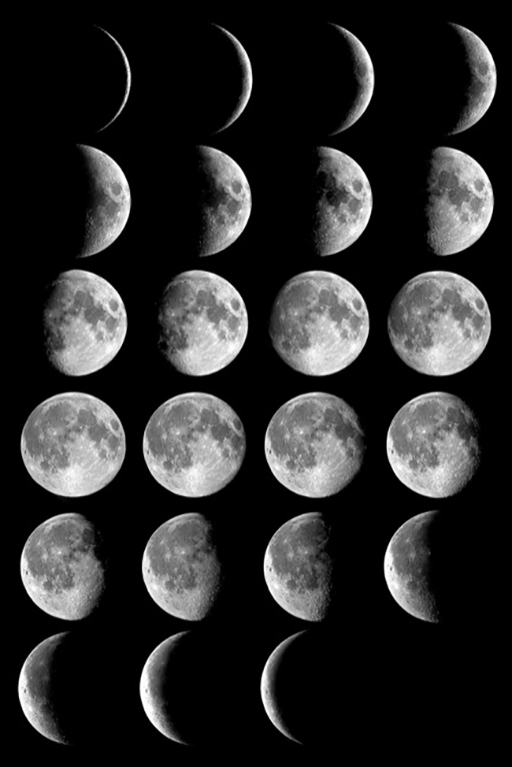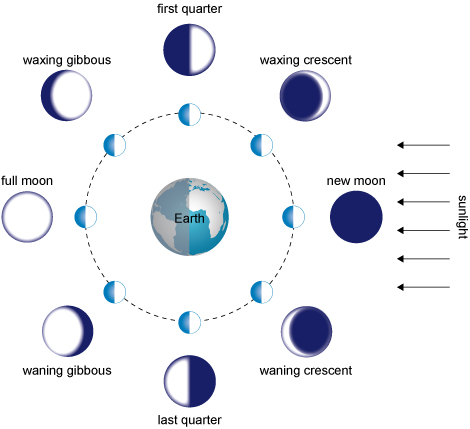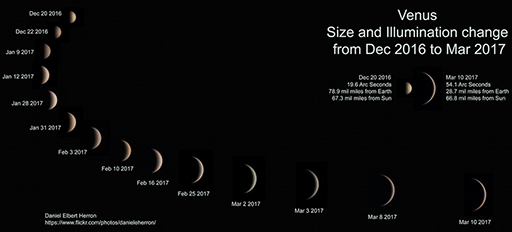1.1 Phases
During a transit, Venus and Mercury appear completely dark against the bright Sun. At other times they appear bright against the night sky – Venus is so bright it is easily visible even in the twilight of morning or evening. With only the naked eye Mercury is a bit more challenging to spot. When viewed through a telescope, it becomes evident that Venus and Mercury have phases, similar to the phases of the Moon (Figure 4).

Figure 5 explains how the phases of the Moon change as the Moon orbits around the Earth each month, according to how much we see of the half that is illuminated by the Sun. At full moon, the Moon is opposite the Sun as viewed from Earth, so we are looking at the entire illuminated half of the Moon, and it appears to be a complete circle. At other phases, some of the illuminated half of the Moon is on its far side as viewed from the Earth, so we see a partially lit object.

We see something very similar with Venus, as Figure 6 shows. With the naked eye Venus looks like a bright star, but even with just binoculars it’s possible to discern some change in shape.

